The Utah Portal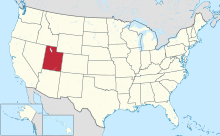  Utah (/ˈjuːtɑː/ YOO-tah, /ˈjuːtɔː/ YOO-taw; Navajo: Áshįįh Biiʼtó Hahoodzo) is a landlocked state in the Mountain West subregion of the Western United States. It borders Colorado to its east, Wyoming to its northeast, Idaho to its north, Arizona to its south, and Nevada to its west. Utah also touches a corner of New Mexico in the southeast. Of the fifty U.S. states, Utah is the 13th-largest by area; with a population over three million, it is the 30th-most-populous and 11th-least-densely populated. Urban development is mostly concentrated in two areas: the Wasatch Front in the north-central part of the state, which is home to roughly two-thirds of the population and includes the capital city, Salt Lake City; and Washington County in the southwest, with more than 180,000 residents. Most of the western half of Utah lies in the Great Basin. Utah has been inhabited for thousands of years by various indigenous groups such as the ancient Puebloans, Navajo, and Ute. The Spanish were the first Europeans to arrive in the mid-16th century, though the region's difficult geography and harsh climate made it a peripheral part of New Spain and later Mexico. Even while it was Mexican territory, many of Utah's earliest settlers were American, particularly Mormons fleeing marginalization and persecution from the United States via the Mormon Trail. Following the Mexican–American War in 1848, the region was annexed by the U.S., becoming part of the Utah Territory, which included what is now Colorado and Nevada. Disputes between the dominant Mormon community and the federal government delayed Utah's admission as a state; only after the outlawing of polygamy was it admitted in 1896 as the 45th. People from Utah are known as Utahns. Slightly over half of all Utahns are Mormons, the vast majority of whom are members of the Church of Jesus Christ of Latter-day Saints (LDS Church), which has its world headquarters in Salt Lake City; Utah is the only state where a majority of the population belongs to a single church. The LDS Church greatly influences Utahn culture, politics, and daily life, though since the 1990s the state has become more religiously diverse as well as secular. (Full article...) Entries here consist of Good and Featured articles, which meet a core set of high editorial standards.
Ralph Vary Chamberlin (January 3, 1879 – October 31, 1967) was an American biologist, ethnographer, and historian from Salt Lake City, Utah. He was a faculty member of the University of Utah for over 25 years, where he helped establish the School of Medicine and served as its first dean, and later became head of the zoology department. He also taught at Brigham Young University and the University of Pennsylvania, and worked for over a decade at the Museum of Comparative Zoology at Harvard University, where he described species from around the world. Chamberlin was a prolific taxonomist who named over 4,000 new animal species in over 400 scientific publications. He specialized in arachnids (spiders, scorpions, and relatives) and myriapods (centipedes, millipedes, and relatives), ranking among the most prolific arachnologists and myriapodologists in history. He described over 1,400 species of spiders, 1,000 species of millipedes, and the majority of North American centipedes, although the quantity of his output was not always matched with quality, leaving a mixed legacy to his successors. He also did pioneering ethnobiological studies with the Goshute and other indigenous people of the Great Basin, cataloging indigenous names and cultural uses of plants and animals. Chamberlin was celebrated by his colleagues at the University of Utah, however he was disliked among some arachnologists, including some of his former students. After retirement he continued to write, publishing on the history of education in his home state, especially that of the University of Utah. (Full article...)Selected image - Zion Canyon at sunset in Zion National Park as seen from Angels Landing
May selected anniversaries
Selected biography -Donald Clark Osmond (born December 9, 1957) is an American singer, dancer, actor, television host and former teen idol. He first gained fame performing with four of his elder brothers as the Osmonds, earning several top ten hits and gold albums. Then, in the early 1970s, Osmond began a solo career, earning several additional top ten songs. He further gained fame due to the success of the 1976–1979 variety series Donny & Marie, which Osmond hosted with his sister Marie Osmond. The Donny & Marie duo also released a series of top ten hits and gold albums, and hosted a syndicated and Daytime Emmy Award–nominated 1998–2000 talk show. Donny & Marie retired from headlining an 11-year Las Vegas residency at the Flamingo Las Vegas in 2019. (Full article...)Selected article - The Ancestral Puebloans, also known as the Anasazi, were an ancient Native American culture that spanned the present-day Four Corners region of the United States, comprising southeastern Utah, northeastern Arizona, northwestern New Mexico, and southwestern Colorado. They are believed to have developed, at least in part, from the Oshara tradition, which developed from the Picosa culture. The people and their archaeological culture are often referred to as Anasazi, meaning "ancient enemies", as they were called by Navajo. Contemporary Puebloans object to the use of this term, with some viewing it as derogatory. The Ancestral Puebloans lived in a range of structures that included small family pit houses, larger structures to house clans, grand pueblos, and cliff-sited dwellings for defense. They had a complex network linking hundreds of communities and population centers across the Colorado Plateau. They held a distinct knowledge of celestial sciences that found form in their architecture. The kiva, a congregational space that was used mostly for ceremonies, was an integral part of the community structure. (Full article...)Did you know -
Selected panorama - Bryce Canyon Amphitheater
TopicsCategoriesGeneral imagesThe following are images from various Utah-related articles on Wikipedia.
State facts
State symbols:
Featured contentArticles:
Lists:
Pictures: Related portals
Lists
Related WikiProjectsNew articlesThis list was generated from these rules. Questions and feedback are always welcome! The search is being run daily with the most recent ~14 days of results. Note: Some articles may not be relevant to this project.
Rules | Match log | Results page (for watching) | Last updated: 2024-05-27 22:31 (UTC) Note: The list display can now be customized by each user. See List display personalization for details.
Things you can doAssociated WikimediaThe following Wikimedia Foundation sister projects provide more on this subject:
Discover Wikipedia using portals |

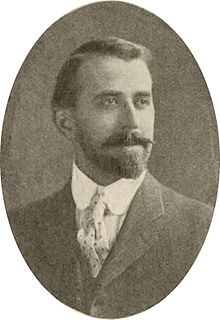


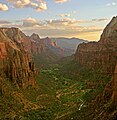























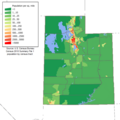



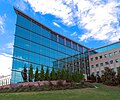



















































Recent Comments